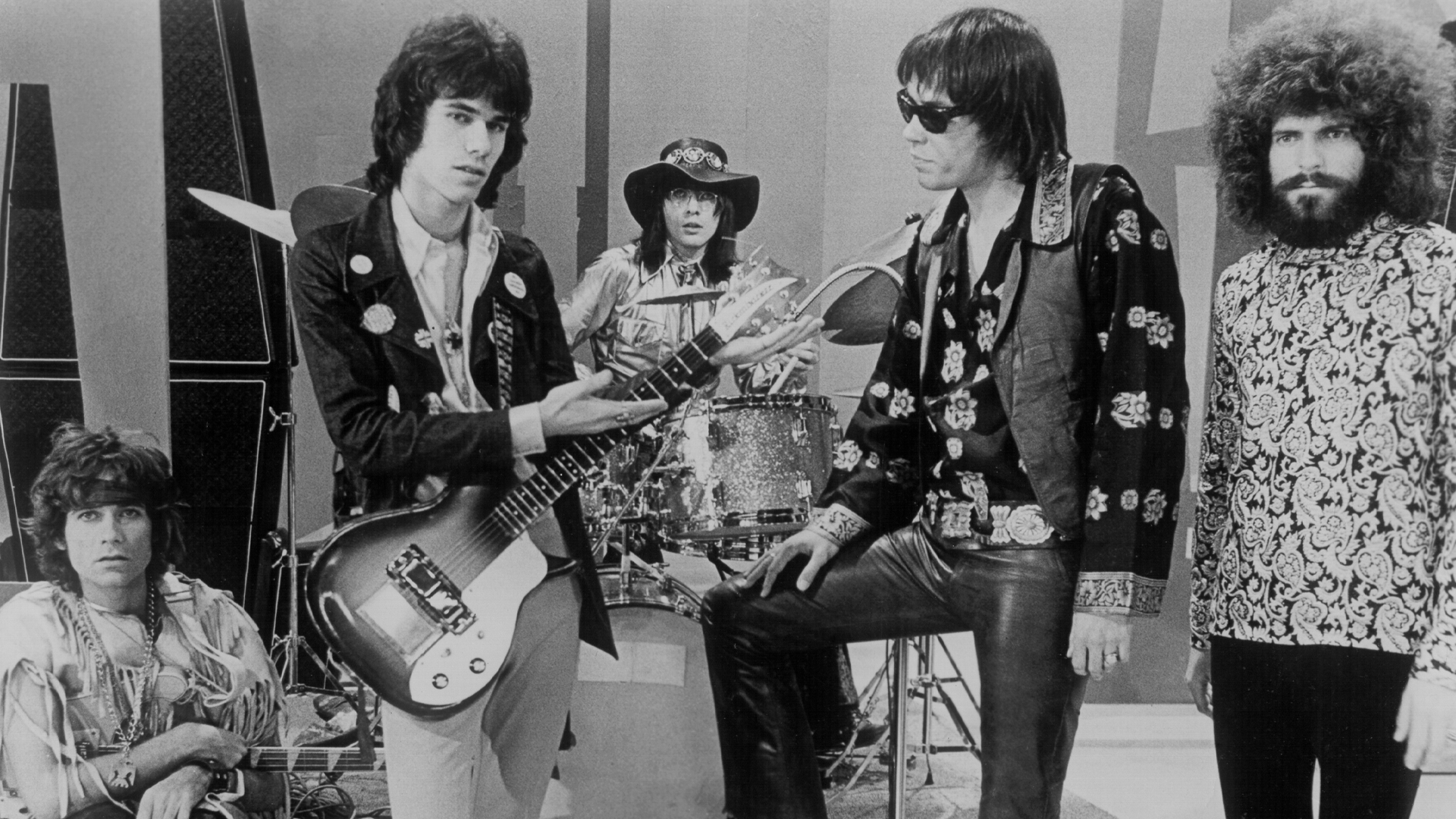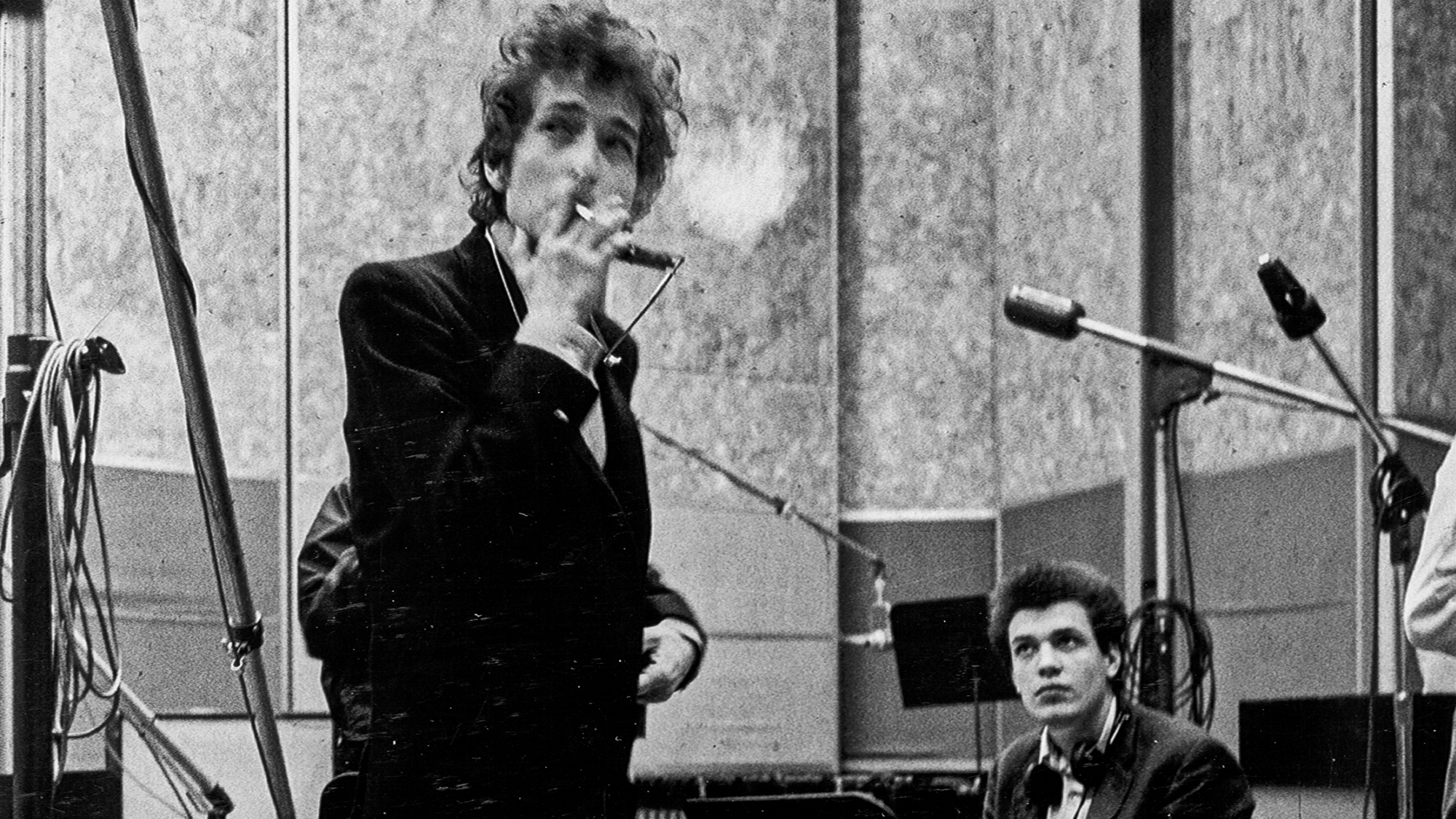"I couldn’t plug my Telecaster into my amp because the lady upstairs always complained about noise!" The writer of Steppenwolf's “Born to Be Wild” reveals the song's secret history

When it comes to epoch-defining songs, it’s hard to top “Born to Be Wild,” Steppenwolf’s high-octane 1968 AM radio smash that perfectly captured the rebellion of the counterculture and the pursuit of personal freedom that took hold of America’s youth during the Vietnam era. A year after its release, the song’s popularity grew wider — and its impact on biker culture became indelible — with its inclusion in the film Easy Rider.
“The biker thing was a big surprise to me,” says the song’s writer, Mars Bonfire, who at the time had never even been on a motorcycle. “The truth is, I wrote ‘Born to Be Wild’ about my first car, a beat-up Ford Falcon. It’s not as glamorous as a fire-breathing two-wheeler, but c’mon. Nothing’s as cool as your first car.”
Since 1964, Bonfire — born Dennis Edmonton — played guitar in the Canadian blues-rock group Sparrow. After a brief move to New York City, where the band recorded a couple of Bonfire’s songs for Columbia Records, the band headed to San Francisco and, eventually, to Los Angeles, where they morphed into Steppenwolf. Sparrow members John Kay (vocals, guitar), Goldy McJohn (keyboards) and Bonfire’s brother Jerry Edmonton (drums) carried on together, but Bonfire opted to strike out on his own as a songwriter and solo artist. “I didn’t like touring all that much,” he says. “They got Michael Monarch to play guitar, and I thought he was fantastic.”
Inspired by long drives throughout the L.A. region (“the mountains, the ocean, the high desert — I’d never seen anything like it”), Bonfire sat in his apartment one night and started plunking away at a bluesy riff on his unamped Fender Telecaster. “I couldn’t plug into my amp because the lady upstairs always complained about noise,” he explains. After he came up with a rousing three-chord pattern, Bonfire says the song's basic structure unfolded — verses, choruses and an instrumental section — as he conjured images of flooring it through majestic vistas.
Bonfire had most of his lyrics written, but while cruising in his Falcon around the San Bernardino mountains, he was caught in a fierce rainstorm and pulled over. “The sky was dark and lightning struck,” he says “I remembered studying the periodic table of elements in school, and there was a category for heavy metals. The phrase ‘heavy metal thunder’ popped into my head.” He laughs. “I had no idea how important those words would soon become.”
Using a reel-to-reel recorder borrowed from a friend, Bonfire laid down a bare-bones demo of his new song using his Telecaster, again unamped. “I had to sing in a whisper,” he says, “because I was trying to keep the noise down.” He tried to place the song with publishers in L.A. but found no takers. “They were into pop stuff, like the Turtles.” As a last resort, he dropped the tape in the mail slot at his brother’s house, and a few days later he got a call from Jerry saying that the band liked the song and would record it.
"The band brought it to life in ways I couldn’t imagine when I played it on my Telecaster.."
—Mars Bonfire
Monarch has said he played a Fender Esquire for Steppenwolf’s self-titled debut, on which “Born to Be Wild” appeared, alongside their celebrated cover of Hoyt Aston’s “The Pusher,” which, like “Born to Be Wild,” was included in Easy Rider. At some point Monarch picked up a sunburst Rickenbacker Combo 800 electric guitar, which he was seen using on the band’s 1969 appearance on The Ed Sullivan Show and in a performance for the German music show Beat-Club (shown in the video below). “I went to their factory and picked out a strange-looking guitar I used in some publicity photos, and in a video,” he explained in a 2001 interview with Vintage Guitar magazine.
All the latest guitar news, interviews, lessons, reviews, deals and more, direct to your inbox!

Bonfire wasn’t in the studio when Steppenwolf cut “Born to Be Wild,” and it wasn’t until months later, while driving that same Ford Falcon, that he finally heard the hard-rocking finished track. “It was like I was lost in a dream when it came on the radio,” he marvels. “The band brought it to life in ways I couldn’t imagine when I played it on my Telecaster. Michael Monarch played brilliantly — I loved his distorted sound. And, of course, my singing couldn’t compare to John Kay. The reality of it didn’t quite hit me at first.”
Bonfire had been tipped off that “Born to Be Wild” would be used in Easy Rider, but hearing his song in the opening moments of the movie left him gobsmacked. “When the film was over, I went to the men’s room, and a guy was singing the song at the urinal,” he recalls. “At that point, I thought, Okay, this thing has struck a nerve.”
Despite its fame, “Born to Be Wild” never reached the top spot on Billboard. It went as high as number two but was kept from number one by the Rascals’ “People Got to Be Free.” Over the years, however, the track been featured in countless movies, TV shows and commercials, and Bonfire has done well with royalties. “Most of the time I like how the song is used,” he says. “It’s always fun and exciting to hear it. There’s a new Pampers commercial that uses it, which might not be so good image-wise. But on the whole, I’ve got no complaints.”
Bonfire did eventually record his own version of his hit song, which came out on his self-titled debut album in 1968.
":As I remember it, after Steppenwolf recorded 'Born to Be Wild,' my publisher, Universal Music — at the time Leeds Music — arranged for their sister label, UNI Records, to put out an album. My contact at Universal Music, Ted Glasser, was the producer and we used a variety of musicians, some recruited by him and some by me. Unfortunately, I don't remember any of their names, and I'm unaware that any had subsequent successful music careers.
"It was a low budget production that only allowed for one take of each song immediately after the group spent a few minutes working up arrangements on material they had never heard before. I always felt the well done psychedelic cover far exceeded the recording in quality."
Steppenwolf eventually recorded three songs from the album — "Ride With Me, Baby," "Tenderness" and "Night Time's for You" — not including their earlier cover of "Born to Be Wild."
You can hear Bonfire's own bluesy version of the song below.

Joe is a freelance journalist who has, over the past few decades, interviewed hundreds of guitarists for Guitar World, Guitar Player, MusicRadar and Classic Rock. He is also a former editor of Guitar World, contributing writer for Guitar Aficionado and VP of A&R for Island Records. He’s an enthusiastic guitarist, but he’s nowhere near the likes of the people he interviews. Surprisingly, his skills are more suited to the drums. If you need a drummer for your Beatles tribute band, look him up.

